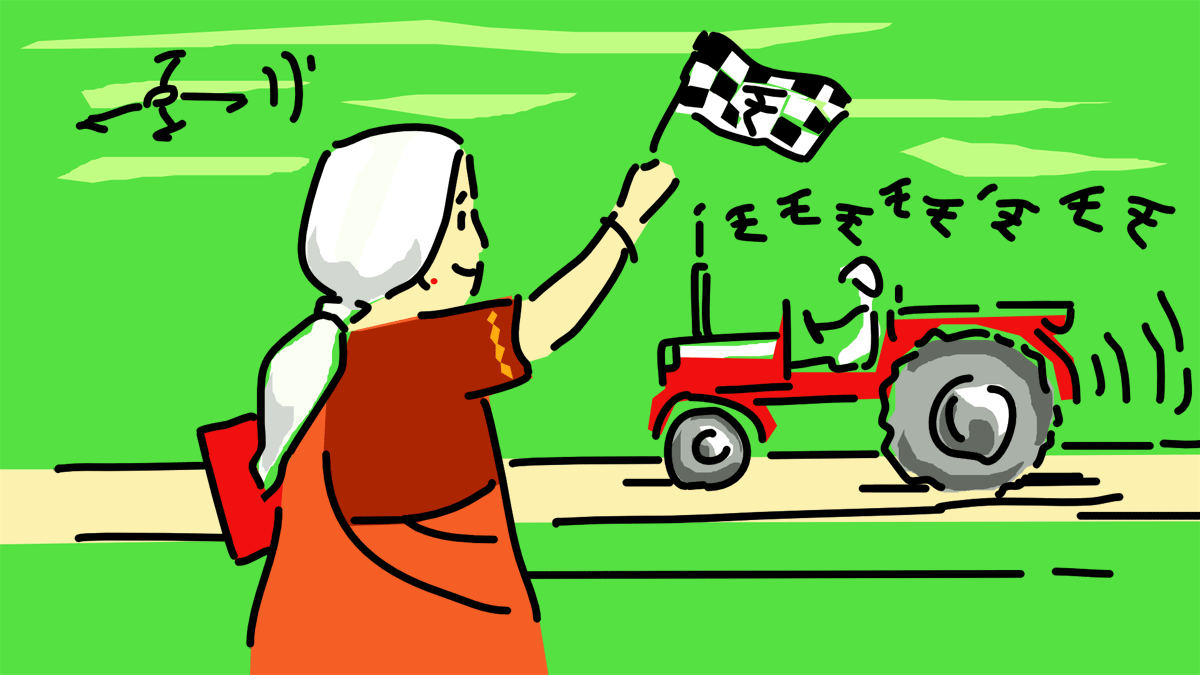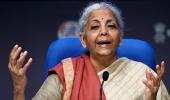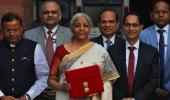Recent documents by NITI Aayog and periodic labour force surveys on employment show that the importance of agriculture is rising in the Indian economy.

A Nabard survey shows a sharp rise in the share of agricultural households in the rural sector with the numbers shooting up from 48 per cent in 2016–17 to 56.7 per cent in 2021–22.
The share of agriculture in total employment in India rose from 42 per cent in 2018 to 46 per cent in 2024.
Agriculture sector has grown at an annual growth rate of 4.2 per cent in the last five years.
However, FY24 recorded a dismal 7-year low of just 1.4 per cent.
Agriculture in FY25 is expected to grow at 3.8 per cent.
There seems to be some revival in rural demand and consumption.
However, food inflation was high at 8.4 per cent in December 2024. Rural real wage growth has been either low or negative in the last one decade.
In the context of rise in the share of agriculture in employment and stagnant wages in rural areas, more push for agriculture and rural demand was expected.
Supply side initiatives are needed to contain food inflation.
The Finance Minister has not disappointed. The measures announced in the Budget on agriculture and rural areas are in the right direction.
The announcements on capital expenditure, manufacturing, services, MSMEs, health and education, taxation etc. will also help agriculture and rural areas.
Agriculture is given importance by putting it under engine 1.
Under agriculture, the FM lists (a) Prime Minister Dhan-Dhaanya Krishi Yojana - Developing Agri Districts Programme helping 1.76 crore population (b) Building Rural Prosperity and Resilience; (c) Aatmanirbharta in Pulses (d) Comprehensive Programme for Vegetables & Fruits; (e) National Mission on High Yielding Seeds (f) Fisheries; (g) Mission for Cotton Productivity;( h) Enhanced Credit through KCC. These are good measures. The success of all these programmes, however, depend on the allocation of funds and efficient implementation.
The Budget shows an increase in the allocations for agriculture and allied activities from Rs 1.41 trillion in FY25 (RE) to Rs 1.71 trillion in FY 25 (BE) — an increase of 21 per cent. But if we compare budget estimates, there was an increase of 13 per cent only. The allocations for food and fertilizer subsidies, rural development, MGNREGA and PM-Kisan are similar to earlier budget. In fact, the revised estimates for FY25 show some reduction in rural development expenditure.
Some of the measures can improve productivity, diversification and incomes for farmers.
But much more is needed for improvement in agriculture and rural areas.
We have to repurpose and change the narrative of agriculture towards more diversified high value production, better farm incomes, marketing and trade reforms, nutrition sensitive, inclusive and environment friendly and climate resilient agriculture.
The next few budgets should move in this direction.
Developing high yielding seed varieties, increasing post-harvest infrastructure including warehousing, logistics, processing and retailing are needed. Boosting of production of pulses, oilseeds, vegetables, and dairy products are important for reducing food inflation.
Similarly, focus should be given to the rural non-farm sector by raising rural manufacturing and services.
The Budget has announced some measures for MSMEs.
More push on policies is required for further growth of incomes and employment for MSMEs.
Recently, the central government (Ministry of Agriculture& Farmers Welfare) uploaded a draft “National Policy Framework on Agricultural Marketing" for public comments.
The new draft policy framework has called for a more collaborative approach between the Centre and states in reforming farm markets.
It also talks about setting up an agricultural marketing reform committee of state agricultural ministers, along the same lines of the GST committee.
The proposed committee of state agricultural ministers can come to some consensus to benefit all the farmers.
The more important thing is producer support to farmers. Recently, OECD released a report on the support to farmers for different countries.
OECD countries support to farmers is 13.7 per cent of gross farm receipts.
On the other hand, there is negative producer support in India (-15 per cent of GFR).
In other words, in India, farmers are net taxed to the extent of 15 per cent while in other countries, farmers benefit from agricultural support.
Export bans also hurt farmers. Indian farmers want freedom from restrictions on market and exports.
The measures announced are good. More push to agriculture and rural areas is needed as the importance of agriculture is high and rising.
The role of states is important for agriculture and rural development.
This is also essential to achieve India’s goals of Viksit Bharat by 2047.
S Mahendra Dev, former chairman, Commission for Agricultural Costs and Prices, and former director, IGIDR












 © 2025
© 2025